 W
WRichard Charles Banks, Ph.D. is an American author, ornithologist and Emeritus Research Zoologist on staff with the Patuxent Wildlife Research Center run by the U.S. Geological Survey and stationed at the Smithsonian Institution in Washington, DC. He is the founder of the Ornithological Council and known for his study of the migratory systems, patterns, and geographic variations of North American birds, primarily focusing on the research and analysis of white-fronted geese.
 W
WTracy Jo Barker is an American herpetologist specializing in pythons.
 W
WAnna Katherine "Kay" Behrensmeyer is an American taphonomist and paleoecologist. She is a pioneer in the study of the fossil records of terrestrial ecosystems and engages in geological and paleontological field research into the ecological context of human evolution in East Africa. She is Curator of Vertebrate Paleontology in the Department of Paleobiology at the Smithsonian Institution's National Museum of Natural History (NMNH). At the museum, she is co-director of the Evolution of Terrestrial Ecosystems program and an associate of the Human Origins Program.
 W
WJason E. Bond is a Professor of Entomology and the Schlinger Chair in Insect Systematics at the University of California, Davis. He was previously Professor of Biology, Chair of the Department of Biological Sciences and Director of the Auburn University Museum of Natural History at Auburn University. When he was an associate professor with the Department of Biology at East Carolina University, he discovered the spider Myrmekiaphila neilyoungi and numerous other species in the genus Aptostichus. He went to undergraduate school at Western Carolina University, majoring in biology in 1993. He then went to receive his M.S. in Biology (1995) and Ph.D. in Evolutionary Systematics and Genetics (1999) from Virginia Tech.
 W
WLauro Fred Cavazos Jr. is an American educator and politician. He served as the United States Secretary of Education, and was the first Hispanic to serve in the United States Cabinet.
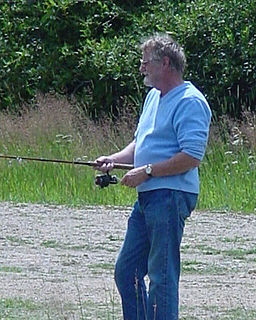 W
WDavid Crews is the Ashbel Smith Professor of Zoology and Psychology at the University of Texas at Austin. He has been a pioneer in several areas of reproductive biology, including evolution of sexual behavior and differentiation, neural and phenotypic plasticity, and the role of endocrine disruptors on brain and behavior.
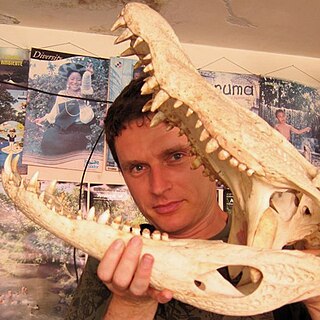 W
WVladimir Dinets is a zoologist and author, known for his studies of Crocodilian behavior and of numerous rare animals in remote parts of the world, as well as for popular writings in Russian and English.
 W
WGregory Walter Graffin is an American musician, singer-songwriter, and evolutionary biologist. He is most recognized as the lead vocalist, songwriter, and only constant member of punk rock band Bad Religion, which he co-founded in 1979. He embarked on a solo career in 1997, when he released the album American Lesion. His follow-up album, Cold as the Clay, was released nine years later. His newest solo work is Millport, released in 2017.
 W
WJack Bushnell Hanna is an American zookeeper and a director emeritus of the Columbus Zoo and Aquarium. He was director of the zoo from 1978 to 1992, and is viewed as largely responsible for elevating its quality and reputation. His media appearances, particularly with Johnny Carson, David Letterman, James Corden, Good Morning America, and Maury Povich have made him one of the most notable animal experts in the United States.
 W
WWilliam Henry Heard is a malacologist, and an authority on freshwater mollusks, especially freshwater pelecypods (clams). He is an emeritus professor in the Department of Biological Sciences, at Florida State University.
 W
WWilliam Scott Home is the pen name of an American author, poet and biologist principally known for writing horror and dark fantasy. Best known for a short story that appeared in 1978 in The Year's Best Horror Stories, Home was most prolific during the 1970s and 80s when his poetry and fiction was published in a wide range of media. Part of a circle of Science Fiction, Fantasy and Horror writers that paid homage to M. P. Shiel and H. P. Lovecraft, Home is considered by many to be a unique talent in his own right. His range of styles and control of language and suspense is well-demonstrated in his published collection: Hollow Faces, Merciless Moons. While he has published little since the 1980s, Home is still writing and currently lives in the Dyea Valley, west of Skagway, Alaska.
 W
WRobert Frederick Inger was an American herpetologist.
 W
WDaniel K Judd was the first counselor to A. Roger Merrill in the Sunday School General Presidency of The Church of Jesus Christ of Latter-day Saints from 2004 to 2009. Judd was also chair of the Ancient Scripture Department of Brigham Young University (BYU). In 2019, Judd was named the Dean of BYU's Department of Religious Education.
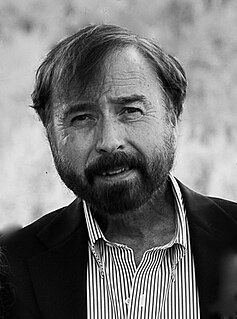 W
WRichard Arthur Lutz is an American marine biologist and deep-sea oceanographer. He is known for deep-sea research using the Alvin submersible, and is considered one of the world's foremost authorities on the ecology of deep-sea hydrothermal vents.
 W
WLynn Margulis was an American evolutionary theorist, biologist, science author, educator, and science popularizer, and was the primary modern proponent for the significance of symbiosis in evolution. Historian Jan Sapp has said that "Lynn Margulis's name is as synonymous with symbiosis as Charles Darwin's is with evolution." In particular, Margulis transformed and fundamentally framed current understanding of the evolution of cells with nuclei – an event Ernst Mayr called "perhaps the most important and dramatic event in the history of life" – by proposing it to have been the result of symbiotic mergers of bacteria. Margulis was also the co-developer of the Gaia hypothesis with the British chemist James Lovelock, proposing that the Earth functions as a single self-regulating system, and was the principal defender and promulgator of the five kingdom classification of Robert Whittaker.
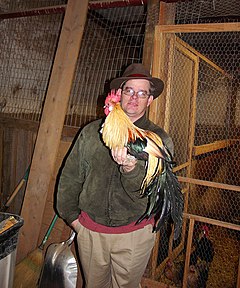 W
WMalcolm L. McCallum is an American environmental scientist, conservationist, herpetologist, and natural historian and is known for his work on the Holocene Extinction. He is also a co-founder of the herpetology journal, Herpetological Conservation and Biology. His research has been covered by David Attenborough, Discover Magazine, and other media outlets.
 W
WEaryn McGee is an American herpetologist, science communicator, and graduate student in conservation biology at University of Arizona. McGee is an American Association for the Advancement of Science (AAAS) IF/THEN Ambassador, and a 2020 AAAS Mass Media Science & Engineering Fellow. In response to the racism faced by Black birdwatcher Christian Cooper in the Central Park birdwatching incident, McGee co-organized Black Birders Week to celebrate Black birders.
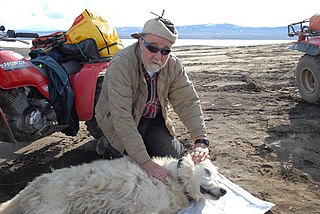 W
WLucyan David Mech, also known as Dave Mech, is an American biologist specializing in the study of wolves. He is a senior research scientist for the U.S. Geological Survey and an adjunct professor at the University of Minnesota. He has researched wolves since 1958 in locations including northern Minnesota, Isle Royale, Alaska, Yellowstone National Park, Ellesmere Island, and Italy.
 W
WDavid Mizejewski is a naturalist, television personality and a spokesperson for the National Wildlife Federation. He frequently appears as a wild life expert on talk shows such as Good Morning America, Conan,Today and The Wendy Williams Show.
 W
WCorina Newsome is an American ornithologist, birder, science communicator, and graduate student at Georgia Southern University. In response to the racism faced by Black birder Christian Cooper in Central Park, Newsome co-organized Black Birders Week to celebrate Black birders.
 W
WKaren Suzanne Oberhauser is an American conservation biologist with a specific interest in monarch butterflies.
 W
WStephanie Kay Panabaker is an American zoologist and former actress. She is best known for her roles as Jenny Garison in the 2009 reboot of Fame, Debbie Berwick on Phil of the Future and Nikki Westerly on Summerland. She is the younger sister of Danielle Panabaker.
 W
WGreg Patent is an American cookbook author and baker. He also co-hosts a weekly radio show about food on Montana Public Radio, The Food Guys, with Jon Jackson, and has made guest appearances on television and radio programs throughout the United States.
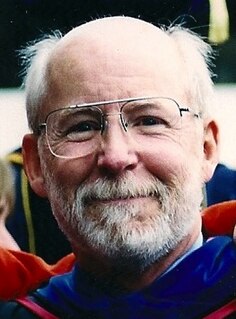 W
WJames Lloyd Patton, is an American evolutionary biologist and mammalogist. He is emeritus professor of integrative biology and curator of mammals at the Museum of Vertebrate Zoology, UC Berkeley and has made extensive contributions to the systematics and biogeography of several vertebrate taxa, especially small mammals.
 W
WKatharine Boynton "Katy" Payne is an American zoologist and researcher in the Bioacoustics Research Program at the Laboratory of Ornithology at Cornell University. Payne studied music and biology in college and after a decade doing research in the savanna elephant country in Kenya, Zimbabwe, and Namibia, she founded Cornell's Elephant Listening Project in 1999.
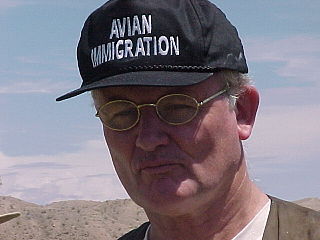 W
WPeter Charles Howard Pritchard was a leading turtle zoologist. Educated at Oxford University and the University of Florida, where he earned his Ph.D. in Zoology, he was most commonly known for his campaign of almost 40 years for the conservation of turtles. Appropriately, his privately funded Chelonian Research Institute, for the study and preservation of turtles, is located in Oviedo, Florida, United States. Scott A. Thomson, curator of the Chelonian Research Institute notes that the CRI has 14500 tortoise and turtle specimens registered with some 2000 unregistered specimens. The collection comprises 100% of all turtle genera, 86% of all species and 72% of all subspecies - the third largest and most complete collection in the world.
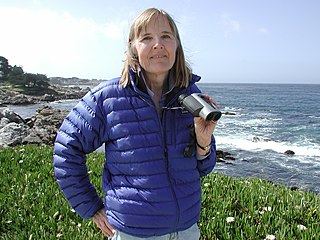 W
WKatherine S. Ralls is an American zoologist and conservationist who is Senior Research Zoologist Emerita at the Smithsonian Conservation Biology Institute, National Zoological Park. Ralls' research interests are in the behavioral ecology, genetics, and conservation of mammals, both terrestrial and marine. Since 1980, she has focused on conservation biology, especially the genetic problems of small captive and wild populations.
 W
WThomas S. Ray is an ecologist who created and developed the Tierra project, a computer simulation of artificial life.
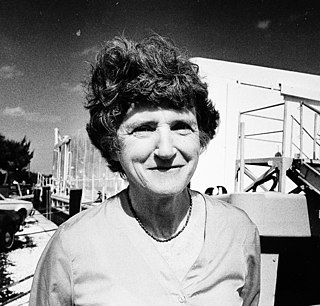 W
WMary Esther Rice is an American invertebrate zoologist specializing in systematics, evolution and the development of marine invertebrates. She worked at the Smithsonian Institution as a curator, educator, research advisor, and administrator from 1966 until her retirement in 2002. She is known for her work on the life histories of Sipuncula, as well as for serving as the first director of the Smithsonian Marine Station at Fort Pierce.
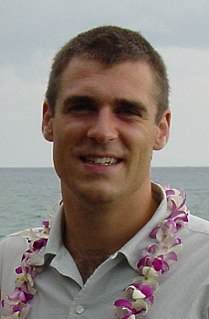 W
WJustin Baker Ries is an American marine scientist, best known for his contributions to ocean acidification and biomineralization research.
 W
WLeslie Jane Rissler is an American biologist best known for her work on amphibian and reptile biogeography, evolutionary ecology, systematics, and conservation , and for her strong advocacy of improving the public’s understanding and appreciation of evolution. She is currently Program Officer in the Evolutionary Processes Cluster of the Division of Environmental Biology and Directorate of Biological Sciences at the National Science Foundation.
 W
WClyde F. E. Roper is a zoologist at the National Museum of Natural History in Washington, D.C.. He has organised a number of expeditions to New Zealand to study giant squid, including in 1997 and 1999. He graduated from Transylvania University in Lexington, Kentucky, in 1959.
 W
WTerri Lynn Roth is the vice president of conservation and science at the Cincinnati Zoo and Botanical Garden. Additionally, she is the director of the Center for Conservation and Research of Endangered Wildlife (CREW). She has made several breakthroughs in the captive breeding of Sumatran rhinoceroses, a critically endangered species with fewer than 300 left.
 W
WLiane Brauch "Lee" Russell was an American geneticist and conservationist. Her studies in mammalian genetics provided the basis for understanding the chromosomic basis for sex determination in mammals and the effects occasioned by radiation, drugs, fuels and waste on mice. Her research allowed better understanding of genetic processes in mammals, mutagenesis and teratogenesis effects on mammals, and knowledge of how these processes can be prevented and avoided. She determined that developing embryos were most vulnerable to the effects of radiation during the first seven weeks of pregnancy and therefore recommended that non-urgent diagnostic X-rays be taken in the 14 days after the onset of a woman's menstrual period, a standard that became internationally accepted in radiological practice. She was also the first to discover that the Y chromosome determines maleness in mammals.
 W
WAlexander Frank Skutch was a naturalist and writer. He published numerous scientific papers and books about birds and several books on philosophy. He is best remembered ornithologically for his pioneering work on helpers at the nest.
 W
WEllen E. Strong is a research zoologist, curator of Mollusca, and the chair of the Department of Invertebrate Zoology at the Smithsonian Institution's National Museum of Natural History. She studies the diversity and the evolutionary relationships of freshwater and marine snails. Many of these snails have been affected by humans and she is part of conservation efforts by informing best how to help these species.
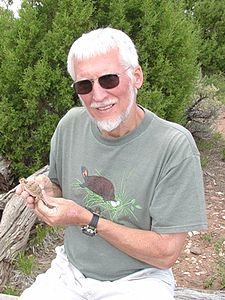 W
WStanley E. Trauth was born September 5, 1948 in St. Louis, Missouri, but moved to Arkansas as a child in 1955. He is an American herpetologist and professor of zoology and environmental studies at Arkansas State University. He is also the curator of the herpetological collection of the Arkansas State University Museum of Zoology.
 W
WWalter R. Tschinkel is an American myrmecologist, entomologist and Distinguished Research Professor of Biological Science and R.O. Lawton Distinguished Professor emeritus at Florida State University. He is the author of the Pulitzer Prize nominated book The Fire Ants, and more than 150 original research papers on the natural history, ecology, nest architecture and organization of ant societies; chemical communication in beetles; and the mysterious fairy circles of the Namib desert. His casts of ant nests and botanical drawings appear in numerous museums of art and natural history, from Hong Kong to Paris.
 W
WElisabeth S. Vrba is a paleontologist at Yale University. Vrba earned her Ph.D. in Zoology and Palaeontology at the University of Cape Town, in 1974. She is well known for developing the Turnover Pulse Hypothesis, as well as coining the word exaptation with colleague Stephen Jay Gould. Her specific interest is in the Family Bovidae, but her current students are studying a wide range of species. She has been a faculty member at the Department of Geology & Geophysics, Yale University, since the early 1980s.
 W
WJason Ward is an American naturalist, birder, and activist. He is the host of the 2019 television documentary series Birds of North America. He is the founder and CEO of "The BlackAFinSTEM Collective".
 W
WJames Dewey Watson KBE is an American molecular biologist, geneticist and zoologist. In 1953, he co-authored with Francis Crick the academic paper proposing the double helix structure of the DNA molecule. Watson, Crick and Maurice Wilkins were awarded the 1962 Nobel Prize in Physiology or Medicine "for their discoveries concerning the molecular structure of nucleic acids and its significance for information transfer in living material". In subsequent years, it has been recognized that Watson and his colleagues did not properly attribute colleague Rosalind Franklin for her contributions to the discovery of the double helix structure.
 W
WEdward Osborne Wilson, usually cited as E. O. Wilson, is an American biologist, naturalist, and writer. His biological specialty is myrmecology, the study of ants, on which he has been called the world's leading expert.